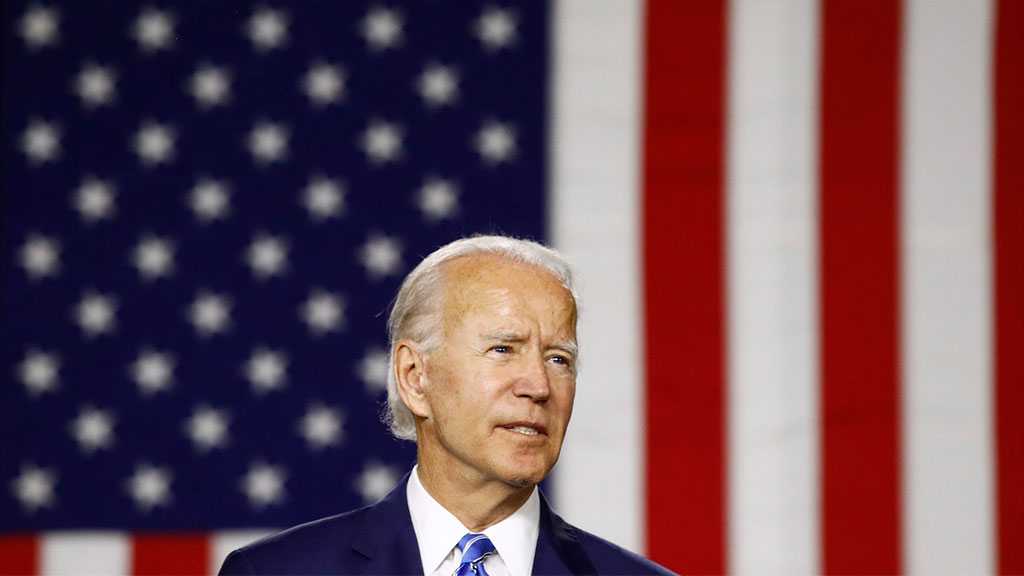
Powered by Trust on Pandemic, Poll Finds Biden Leading Trump

By Staff, Agencies
A recent ABC News/Washington Post poll showed US Democratic presidential nominee Joe Biden holding a 17-point lead over Donald Trump in trust to handle the coronavirus pandemic.
The poll powered the Democrat to a double-digit advantage in vote preference with the US presidential election three weeks away.
In the aftermath of his own COVID-19 diagnosis, two-thirds of registered voters say Trump failed to take appropriate precautions against the virus, 62% distrust what he says about it and eight months since its arrival in the United States just 21% say it's under control.
Also damaging to Trump: 58% disapprove of how he's handled the pandemic -- essentially steady since July -- and a new high, 73%, are worried they or an immediate family member might catch the coronavirus [or say it's already happened]. Worry about the virus remains a significant independent predictor of support for Biden over Trump.
The presidential race stands at 53%-41%, Biden-Trump, among registered voters, and a similar 54%-42% among likely voters, with minimal support [in the low single digits] for the Libertarian and Green Party candidates. Biden's advantage rests on his support among women, racial and ethnic minorities, independents and an unusually wide lead among moderates.
The race is tied among men, 48%-48% in this poll, produced for ABC by Langer Research Associates, while Biden is up 59%-36% among women, the widest margin among women for any presidential candidate in exit polls dating to 1976. [That includes 62%-34% among suburban women and 54%-41% among suburban white women.] Biden's vast 69%-25% lead among moderates, if it holds, would be a record by far. And his result among independents, while not a statistically significant lead, is the widest for a Democrat in exit polls since 1988.
This poll describes the current contest; it's not remotely close enough to Election Day to be predictive of the outcome. Look no further than 2016: Hillary Clinton held a 12-point lead on Oct. 22, 17 days before the election, following sexual assault allegations against Trump and disclosure of his lewd comments on the "Access Hollywood" tape. That contracted to Trump up by 1 point eight days later, as GOP voters set aside their doubts and returned to his ranks, and Clinton up by 2 points a week before the election.
Trump, moreover, has ammunition: 54% now approve of his handling of the economy, the most since March [albeit by a single percentage point]. In contrast with his deficit on the pandemic, he continues to run essentially even with Biden in trust to handle the economy, 48%-47%.
Nearly twice as many registered voters say the economy is the single most important issue in their vote, 29%, as pick the pandemic, 15%. While that's a 6-point increase for the economy as the top issue from Sept. 24, the potential benefit for Trump is mitigated by a 5-point drop in another of his go-to issues, crime and safety, as the top concern.
A last question is how people vote: Just 40% of likely voters now say they plan to vote on Election Day, a historical low if it's borne out. Fifty-eight percent instead say they'll vote early or already have voted [6%]. Compared with last month, slightly more say they'll vote [or have voted] early in person [21%]; and another 23% by mail.
It matters: As has been the case all year, there's a vast difference in vote preferences. Traditional Election Day voters support Trump over Biden by 64%-32%. Those who vote early support Biden by an even wider margin, 70%-26%.
This ABC News/Washington Post poll was conducted by landline and cellular telephone Oct. 6 to 9, 2020, in English and Spanish, among a random national sample of 879 registered voters, including 725 likely voters.
Results have margins of sampling error of 3.5 points among registered voters and 4.0 points among likely voters, including design effects. Partisan divisions are 32%-29%-34%, Democrats-Republicans-independents, among registered voters and 35%-30%-30% among likely voters.
Comments



